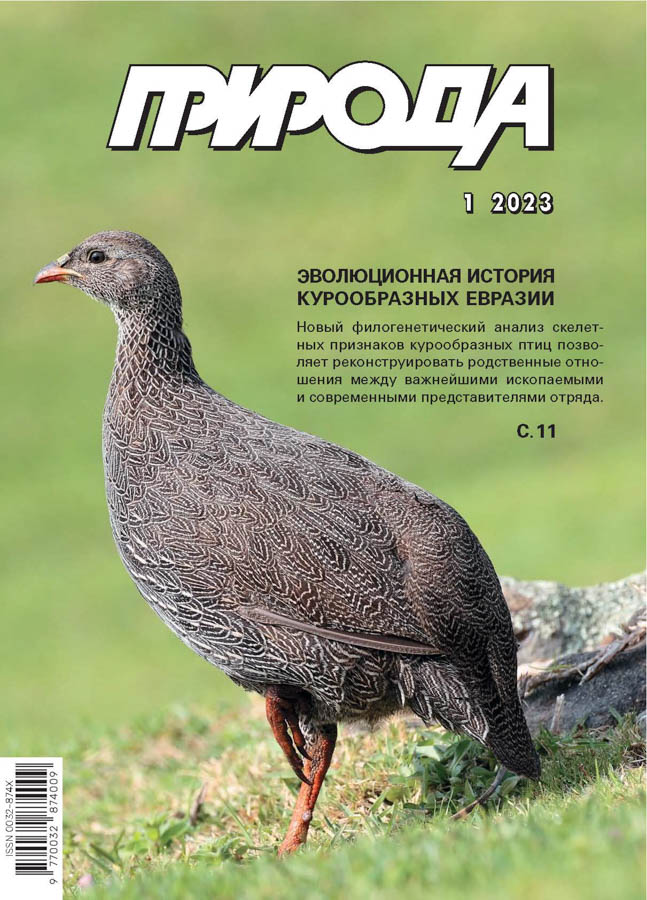Biological Species: Reality or Abstraction? A Fascinating Story about Two Buntings
- Авторлар: Rubtsov A.S1
-
Мекемелер:
- State Darwin Museum
- Шығарылым: № 1 (2023)
- Беттер: 25-33
- Бөлім: Articles
- URL: https://journals.eco-vector.com/0032-874X/article/view/627760
- DOI: https://doi.org/10.7868/S0032874X23010039
- ID: 627760
Дәйексөз келтіру
Аннотация
The main issue of the species problem is the following: do species really exist or is it just an abstract taxonomic category invented by taxonomists to describe biological diversity? The dilemma “either species without evolution or evolution without species” can be solved by logically substantiating that there should be only few (or no) transitional forms between subspecies and species. In the terms of the biological concept of a species, the reinforcement hypothesis serves as such justification: in the hybrid zone, natural selection facilitates mechanisms of ethological isolation, i.e. secondary contact leads to an acceleration of the process of speciation. The key point of this hypothesis is the statement about the reduced fitness of hybrids resulted from the destruction of the co-adapted gene complexes of parental forms, the formation mechanism of which is described by the Dobzhansky—Muller model. To evaluate the effectiveness of reproductive isolation mechanisms and the viability of hybrids, I conducted a long-term monitoring of the hybrid population of the yellowhammer and the pine bunting in Altai. It turned out that the hybrids are actually characterized by the shorter life span than the birds with the parental type of phenotype. It confirms the Dobzhansky—Muller model, although the reinforcement hypothesis does not find its confirmation in this case.
Негізгі сөздер
Әдебиет тізімі
- Дарвин Ч. Происхождение видов путем естественного отбора. М., 1987.
- Майр Э. Зоологический вид и эволюция. М., 1968.
- Haffer J. The history of the species concepts and species limits in ornithology. Bull. Br. Ornithol. Cl. Supplement. 1992; 112A: 107–158.
- Barton N.H., Hewitt G.M. Analysis of hybrid zones. Ann. Rev. Ecol. Syst.1985; 16: 113–148. doi: 10.1146/annurev.es.16.110185.000553.
- Haffer J. Superspecies and species limits in vertebrates. J. Zool. Systematics and Evolutionary Research. 1986; 24(3): 169–190. doi: 10.1111/j.1439-0469.1986.tb00626.x.
- Butlin R. Speciation by reinforcement. Trends Ecol. Evol. 1987; 2(1): 8–13. doi: 10.1016/0169-5347(87)90193-5.
- Добжанский Ф.Г. Генетика и происхождение видов. М., 2010.
- Orr H.A. The population genetics of speciation: the evolution of hybrid incompatibilities. Genetics. 1995; 139(4): 1805–1813. doi: 10.1093/genetics/139.4.1805.
- Price T.D., Bouvier M.M. The evolution of F1 postzygotic incompatibilities in birds. Evolution. 2002; 56(10): 2083–2089. doi: 10.1554/0014-3820(2002)056[2083:TEOFPI]2.0.CO;2.
- Панов Е.Н. Гибридизация и этологическая изоляция у птиц. М., 1989. [Panov E.N. Hybridization and Ethological Isolation in Birds. Moscow, 1989. (In Russ.).]
- Рубцов А.С. Имитационная компьютерная модель гибридной зоны: ассортативность спаривания в роли отбора против гибридов. Журнал общей биологии, 2019; 80(4): 251–259. doi: 10.1134/S0044459619040080.
- Nikelski E., Rubtsov A.S., Irwin D. Mitonuclear co-introgression opposes genetic differentiation between phenotypically divergent songbirds. Heredity. 2023. In press. doi: 10.1101/2021.08.08.455564.
- Рубцов А.С., Опаев А.С. Реконструкция филогении обыкновенной (Emberiza citrinella) и белошапочной (E.leucocephala) овсянок по песне и морфологическим признакам. Зоол. журн. 2012; 91(5): 577–591.
- Price T. Speciation in birds. Greenwood Village, CO, 2008.
- Рубцов А.С., Тарасов В.В., О характере взаимоотношений обыкновенной (Emberiza citrinella) и белошапочной (Emberiza leucocephalos) овсянок в лесостепном Зауралье. Зоол. журн. 2017; 96(5): 522–536. doi: 10.7868/S0044513417030114.
- Панов Е.Н., Рубцов А.С., Мордкович М.В. Новые данные о взаимоотношении двух видов овсянок (Emberiza citrinella, E.leucocephalos), гибридизирующих в зонах перекрывания их ареалов. Зоологический журнал. 2007; 86(11): 1362–1378.
- Панов Е.Н., Рубцов А.С., Монзиков Д.Г. Взаимоотношения двух видов овсянок (обыкновенной Emberiza citrinella и белошапочной E.leucocephalos), гибридизирующих в зонах перекрывания их ареалов. Зоол. журн. 2003; 82(4): 470–484.
- Рубцов А.С. Состав пар, биотопические предпочтения и относительная продолжительность жизни птиц в гибридной популяции обыкновенной (Emberiza citrinella) и белошапочной (Emberiza leucocephalos) овсянок (Passeriformes, Emberizidae) на Алтае. Зоологический журнал. 2021; 100(11): 1276–1287. doi: 10.31857/S0044513421090075.
- Шитиков Д.А., Вайтина Т.М., Макарова Т.В. и др. Влияние успешности размножения на видимую выживаемость луговых воробьиных птиц. Зоол. журн. 2017; 96(7): 827–837. doi: 10.7868/S0044513417070145.
- Poelstra J.W., Vijay N., Bossu C.M. et al. The genomic landscape underlying phenotypic integrity in the face of gene flow in crows. Science. 2014; 344(6190): 1410–1414. doi: 10.1126/science.1253226.
- Semenov G.A., Yurlov A.K., Khaydarov D.R. Hybridization of Motacilla alba Linnaeus, 1758, and M.(a.) personata Gould, 1861, in the south of Siberia. Contemp. Probl. Ecol. 2010; 3(5): 579–586. doi: 10.1134/S1995425510050127.
Қосымша файлдар








